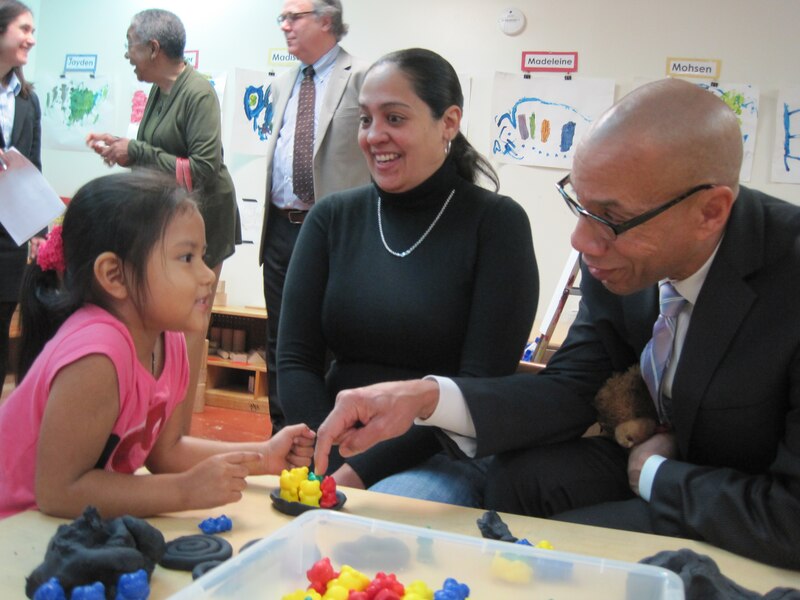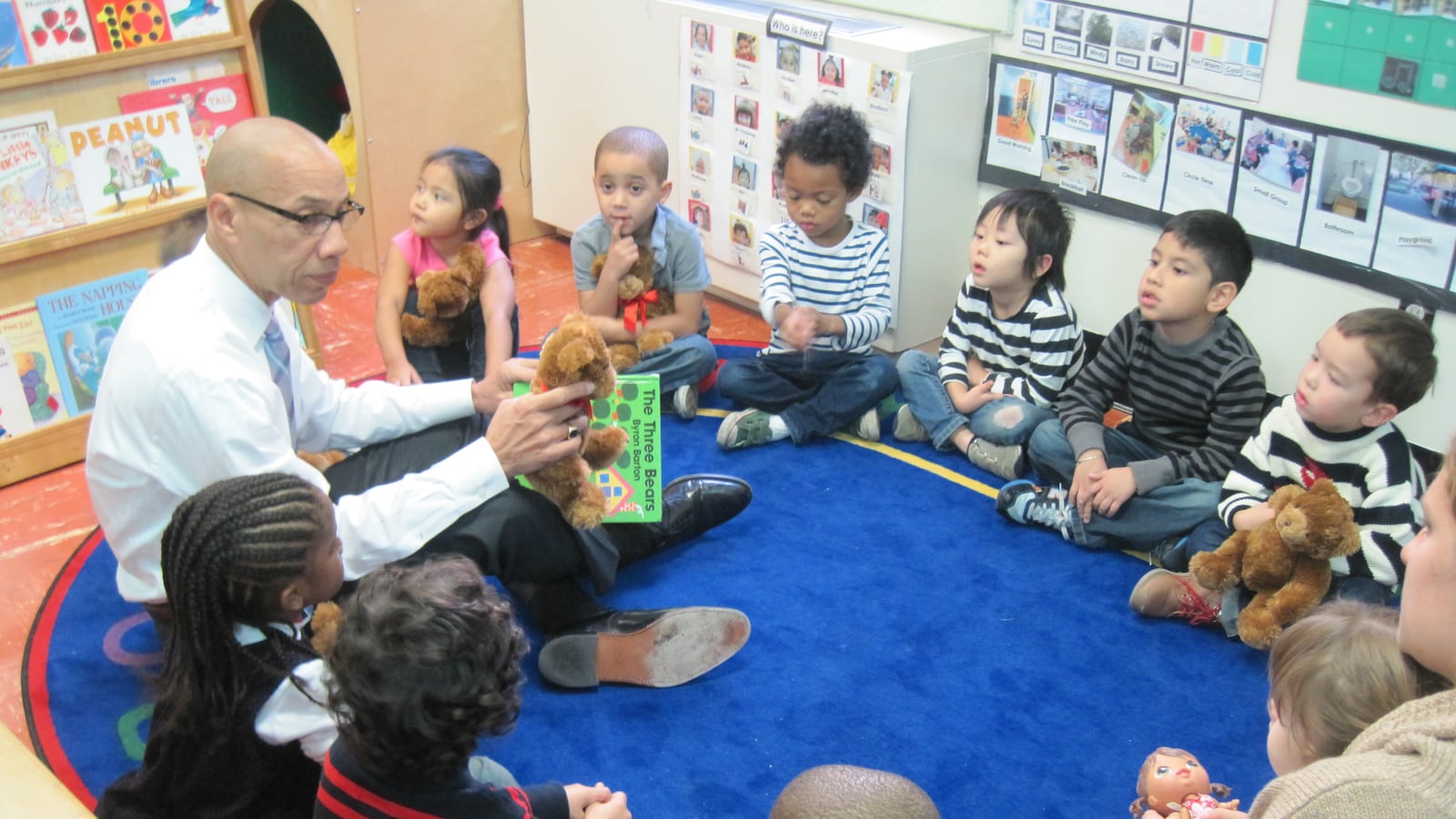Using skills developed at his first job, Chancellor Dennis Walcott dropped to the floor at Manhattan’s Bank Street Head Start center today and read a version of Goldilocks and the Three Bears to a circle of 4-year-olds.
Just as he said he had as a pre-kindergarten teacher in the 1970s, Walcott changed his voice for the different characters and acted out parts of the story, keeping the children laughing and acting along. (Watch video of the reading.)
The read-aloud came during a break in painting, mashing play dough, building with blocks, and assembling magnetic tiles — activities that look like fun and games but actually reflect the city’s academic goals for pre-K students.
Those goals are set out in the city’s new curriculum standards, called the Common Core, which start in pre-K. Like all city students, children in the Department of Education’s pre-K classes are expected to complete Common Core-aligned “tasks” this year like the ones the DOE has suggested for units about trucks, plants, and the five senses.
Among the Common Core standards for pre-K: Students should engage in group reading activities such as the one Walcott led and practice addition and subtraction using everyday objects.
In a second-floor classroom today, a 4-year-old boy sat with a staff member, counting the grapes on his plate. After deciding he had nine grapes already, he swooped in with a spoon to take “just one more” from the serving bowl. But he picked up two, prompting his teacher to say, “Is that one grape?”
“No! It’s two!” he answered.
In June, 18 pre-K directors were among the hundreds of school leaders who attended a presentation by David Coleman, the standards’ architect, that Walcott said elicited “off-the-chart” excitement. Pre-K staff have already started in on four trainings on the Common Core, and instructional coaches assigned to each center by the DOE are helping teachers figure out how to incorporate the new standards, according to Sophia Pappas, executive director of the DOE’s Office of Early Childhood Education, who joined Walcott for the visit.
Pre-K’s play-based instruction is an ideal showcase for the critical-thinking and problem-solving skills that the Common Core emphasizes, Pappas said. A recent study concluded that city kindergarteners spend an average of just 30 minutes a day on creative play.
Pappas said the Common Core could offer a roadmap for incorporating collaborative play beyond pre-K because early childhood and kindergarten teachers will for the first time be using the same language to talk about curriculum.

Three-year-olds at Bank Street, one of two centers associated with the Bankstreet College of Education, attend federally funded Head Start classes. Four-year-olds have full-day pre-kindergarten classes funded by Head Start and the state’s perennially underused universal pre-K budget line. That means the center must reapply for funding to the U.S. Department of Education, which announced last week that it would require all Head Start programs to prove they prepare children for kindergarten. The city is in the midst of a similar reauthorization process for early childhood centers that the Administration for Children’s Services runs to reapply for funding as part of an initiative called Early Learn.

